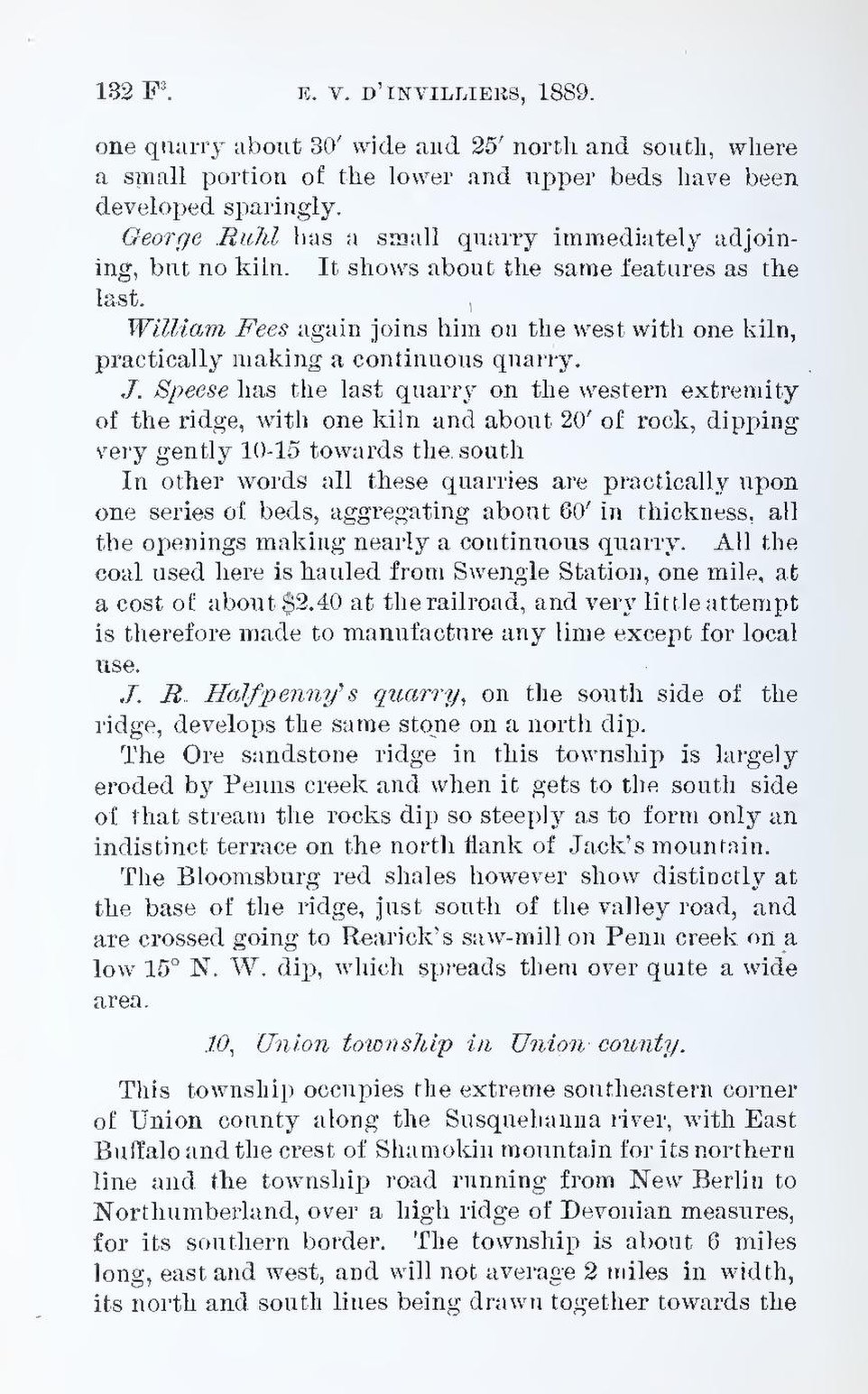one quarry about 30′ wide and 25′ north and south, where a small portion of the lower and upper beds have been developed sparingly.
George Ruhl has a small quarry immediately adjoining, but no kiln. It shows about the same features as the last.
William Fees again joins him on the west with one kiln, practically making a continuous quarry.
J. Speese has the last quarry on the western extremity of the ridge, with one kiln and about 20′ of rock, dipping very gently 10–15 towards the south
In other words all these quarries are practically upon one series of beds, aggregating about 60′ in thickness, all the openings making nearly a continuous quarry. All the coal used here is hauled from Swengle Station, one mile, at a cost of about $2.40 at the railroad, and very little attempt is therefore made to manufacture any lime except for local use.
J. R. Halfpenny’s quarry, on the south side of the ridge, develops the same stone on a north dip.
The Ore sandstone ridge in this township is largely eroded by Penns creek and when it gets to the south side of that stream the rocks dip so steeply as to form only an indistinct terrace on the north flank of Jack’s mountain.
The Bloomsburg red shales however show distinctly at the base of the ridge, just south of the valley road, and are crossed going to Rearick’s saw-mill on Penn creek on a low 15° N. W. dip, which spreads them over quite a wide area.
10, Union township in Union county.
This township occupies the extreme southeastern corner of Union county along the Susquehanna river, with East Buffalo and the crest of Shamokin mountain for its northern line and the township road running from New Berlin to Northumberland, over a high ridge of Devonian measures, for its southern border. The township is about 6 miles long, east and west, and will not average 2 miles in width, its north and south lines being drawn together towards the
